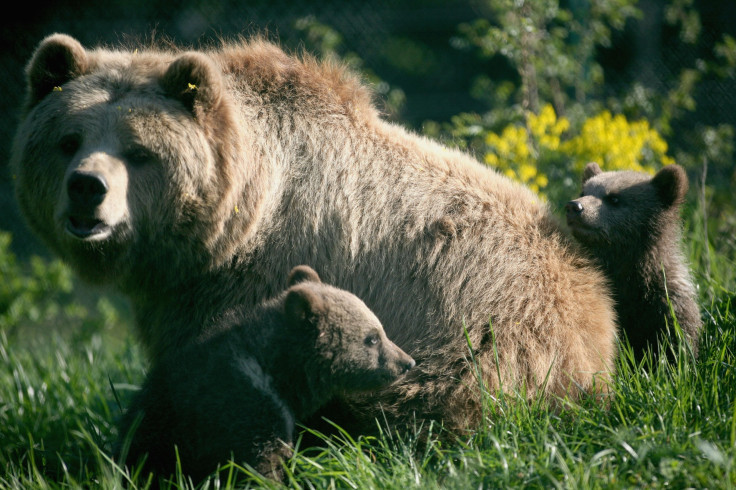Why Some Mama Bears Choose Dens That Are Close To Humans
KEY POINTS
- Some female bears and their cubs have to opt for "sub-optimal" habitats
- Dens close to humans may provide a "human shield" from males that kill cubs
- Being close to humans also presents dangers for the bears
How do mama bears pick their dens for them and their cubs? It may seem counter-intuitive, but some female bears actually choose ones that are closer to humans.
For their study, published in Mammal Research, the researchers looked at whether there are differences in how female bears with cubs chose their dens at a time when there was "low bear density" (1995-2005) and when there was a spike in the bear population (2006-2016).
"Animals do not distribute randomly in space," they wrote. "When population density increases, the competition for space and resources is amplified, typically resulting in changes in the spatial behavior of individuals and populations at different scales."
They found that the more experienced female bears chose the most ideal locations, Nottingham Trent University (NTU) noted in a news release. These dens were the ones with better food sources and higher altitudes and were closer to rougher terrain. Not only could this limit their cubs' movements, but it also helped them avoid encounters with other bears and even people, NTU explained.
As the population increased, some of the bears had to opt for lower quality habitats in lower areas for them and their cubs even though their "reproductive performance and survival" were lower in these areas. Interestingly, however, if the optimal locations were specifically farther away from possible human interaction, some of the female bears chose dens that were closer to human disturbance.
It's possible that they chose these dens because of male bears. Males have the tendency to kill cubs to make the females "more receptive" to mating again, according to NTU. Since males tend to avoid areas that are close to humans, then opting for dens close to human disturbance could, in turn, protect them from these males as well.
"Although the lack of simultaneous positions of FCOY (females with cubs of the year) and adult bears does not allow to test this human-shield hypothesis, habitat selection is shown to be important for offspring survival of Scandinavian brown bears by helping to avoid infanticide by conspecifics," the researchers wrote.
"The research also supports a well-established theory in ecology that competition for territories results in the most dominant individuals holding the higher-quality areas earlier while the weakest are forced to find sub-optimal habitats," one of the study authors, Antonio Uzal of NTU, said in the university news release.
Although there may be benefits to being quite close to humans, as the study's findings show, there may be detrimental effects as well. Among these are possible increases in encounters with humans and the higher chances of them getting killed on the roads, Uzal explained.
"From a conservation-oriented perspective, our results inform the management of threatened species that are partially recovering former ranges in human-modified landscapes," the researchers wrote. "This is crucial for landscape management and designations of critical habitat, i.e., to avoid displacement of FCOY at a critical period of the year, and for promoting awareness of potential wildlife-human conflicts."

© Copyright IBTimes 2024. All rights reserved.





















